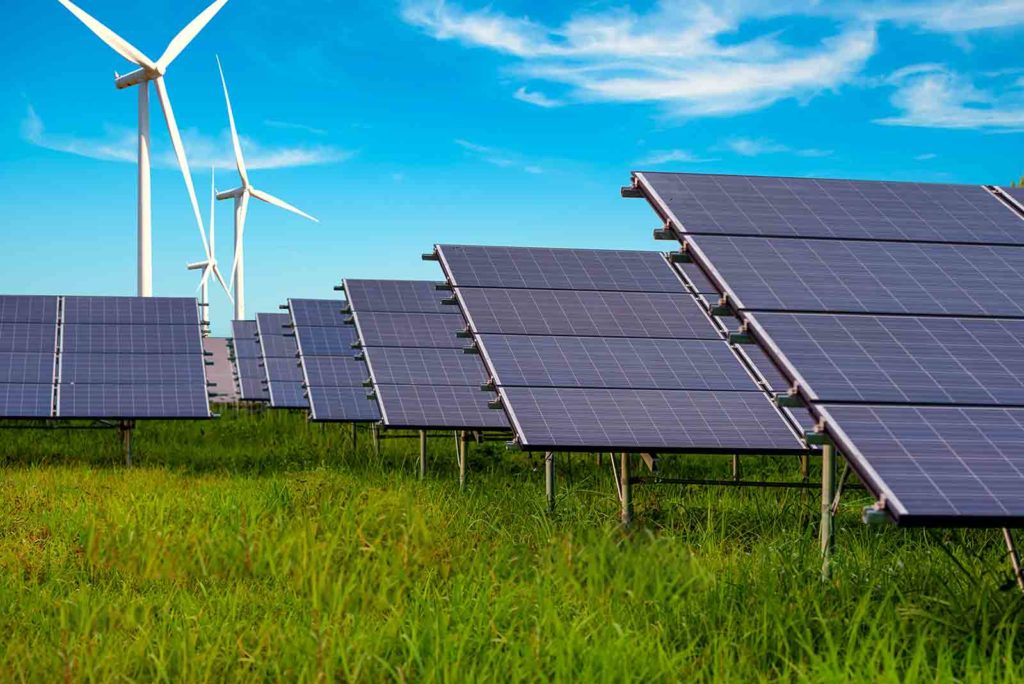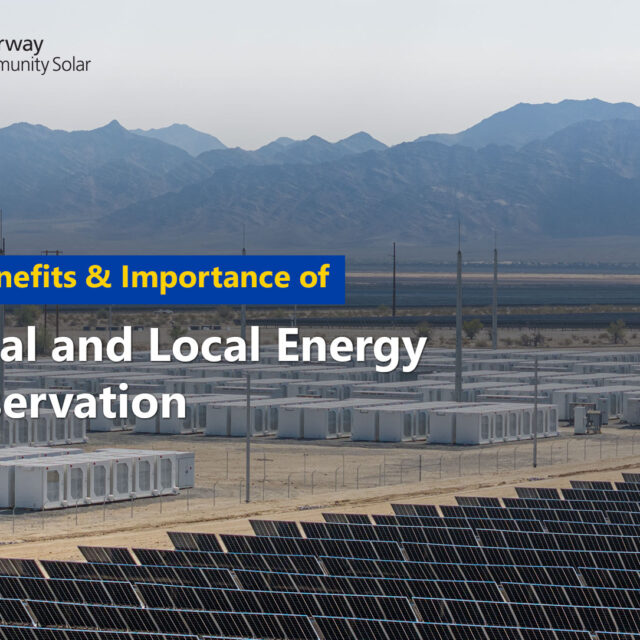
What will keep the proverbial lights on in the future? That is the essential question at the heart of the Annual Energy Outlook reports prepared by the Energy Information Administration (EIA), a statistical and analytical organization within the United States’ Department of Energy.
The latest of these reports, released in February 2018, offers some credible, and some surprising, findings regarding how the nation will power itself all the way out to 2050. Let’s take a look at some of the findings.
According to the Annual Energy Outlook 2018 (AEO2018), solar power is poised to make up an increasingly bigger slice of the overall domestic energy pie, up from under 2 percent now to 14 percent by around the 2050 or so.
The AEO2018 further suggests, in an interesting turn of events, that the U.S. will become a net energy exporter to the world around 2022. That would counter a longstanding trend going back nearly 70 years during which the country has been a net importer, consuming more energy than domestic production could satisfy.
Overall, the report highlights the fluid, fast-changing nature of the energy marketplace and the impact that renewable sources are having in powering the U.S.
“EIA expects that wind and solar will be among the largest sources of new generation,” said Christopher Namovicz, a senior renewable energy analyst at the EIA. “Both have already achieved significant market share for generation over the past 10 to 15 years.”
Ascendant renewables and natural gas
For a gauge of the accelerating rate of solar’s (and renewable energy’s) adoption, consider the AEO2008 from just a decade ago. It suggested that coal would dominate domestic energy supplies in the year 2030, comprising 55 percent of total electricity generation. Meanwhile, the same 2008 report projected that solar and other renewables would remain behind nuclear and natural gas as the fourth-ranked electricity generation category, supplying a relatively small 2.5 percent.
The most probable projections offered in the 2018 Outlook paints a far rosier future for renewables. By 2034, solar, wind, hydropower and their green ilk look poised to become the second biggest source of electricity generation, surpassing coal and nuclear, and trailing only natural gas for the top spot.
These shifts across the report’s several energy categories can be traced to key developments over the past decade. Natural gas has surged in production and fallen in cost because of the hydraulic fracturing, or “fracking” revolution that began in earnest in 2006. Fracking is a method of extracting natural gas by injecting high-pressure fluids into underground rock formations, cracking them open and allowing trapped gas and oil to flow for collection. The huge stores of gas tapped into by fracking have moved the U.S. toward energy independence and placed it on course to be a net exporter of gas and coal energy resources in the early 2020s.
Solar, for its part, has made tremendous inroads based on its economic competitiveness with conventional fossil fuels. Factors behind solar’s competitiveness include increasing manufacturing capacity and efficiency gains from technological advances in converting sunlight into usable electricity. Upon crunching the numbers, electric utilities and independent power producers are increasingly opting for installing less expensive solar versus expanding traditional sources of generation. “For the most part, we see installations based on the economic competitiveness of the generation,” said EIA’s Namovicz.
Part of solar’s competitiveness also depends on federal tax credits, state-level incentives, and clean energy regulations. The recent federal tax reform passed in December 2017 left the federal investment tax credit in place, presently at 30 percent of investment cost for both residential and commercial systems, with a preexisting phase down that will still leave a permanent 10 percent credit for commercial systems starting in 2022.
Solar getting out into the community
Drilling down another level, the AEO2018 also models solar farms and the residential solar setups installed in homes. The growth of solar farms is modeled cost versus value for the utilities. The residential solar component, however, goes beyond this basic economic framework and incorporates models of people’s attitudes towards solar. For instance, the report’s projections take into account how someone installing a solar power system increases the chances that a neighbor likewise opts to install rooftop solar.
“Our methodology for projecting adoption of residential solar photovoltaic systems includes social spillover or social momentum as one of several factors used in assessing the likelihood that at least one solar system will be installed in a particular area,” said Erin Boedecker, a team leader for buildings energy consumption and efficiency analysis at the EIA. “The social spillover factor can be interpreted as ‘awareness’ of solar.”
Although the AEO2018 is bullish on solar, some organizations think solar and wind power has considerably more capacity to grow in the coming years. The Natural Resources Defense Council (NRDC) contends that EIA’s “conservative AEO forecasts traditionally underestimate the potential for clean energy progress.” The Solar Energy Industries Association (SEIA) points to the rapid rise of community solar.
A snapshot in time
Ultimately, any particular Annual Energy Outlook can only provide a snapshot from an immediate here-and-now to a there-and-then, because its projections are based on the laws and policies in existence at the time of each annual report’s preparation. In other words, the reports do not consider game-changing legislation that future Congresses and Administrations might pass, which indeed would be a tricky prognostication at best.
Instead, the Outlooks model a number of scenarios to examine deviations from a most probable, so-called Reference case. The alternative cases explore more readily modeled scenarios involving low and high economic growth, oil prices, and oil and gas resources and extraction technologies. Across the plausible scenarios, renewables including solar still maintain momentum, albeit to varying degrees. Ultimately, the future of solar as a substantially larger share of energy production looks reasonably assured.
“We project significant growth both in utility-scale and small-scale, distributed solar, primarily from systems using photovoltaic technology,” said Namovicz. “There are limits to how big the market may be, but as our projections suggest, that limit is quite a bit above where we are now.”









